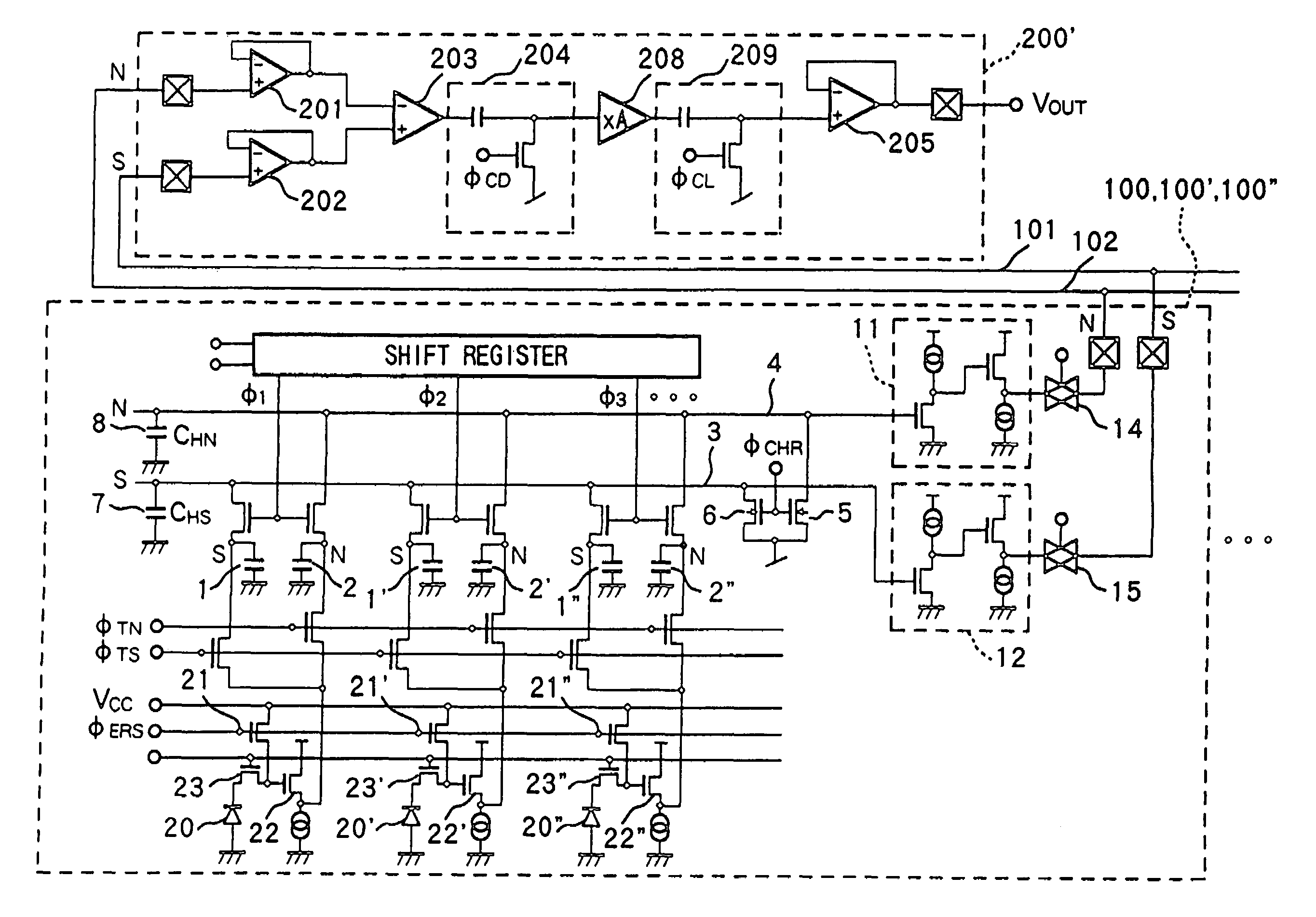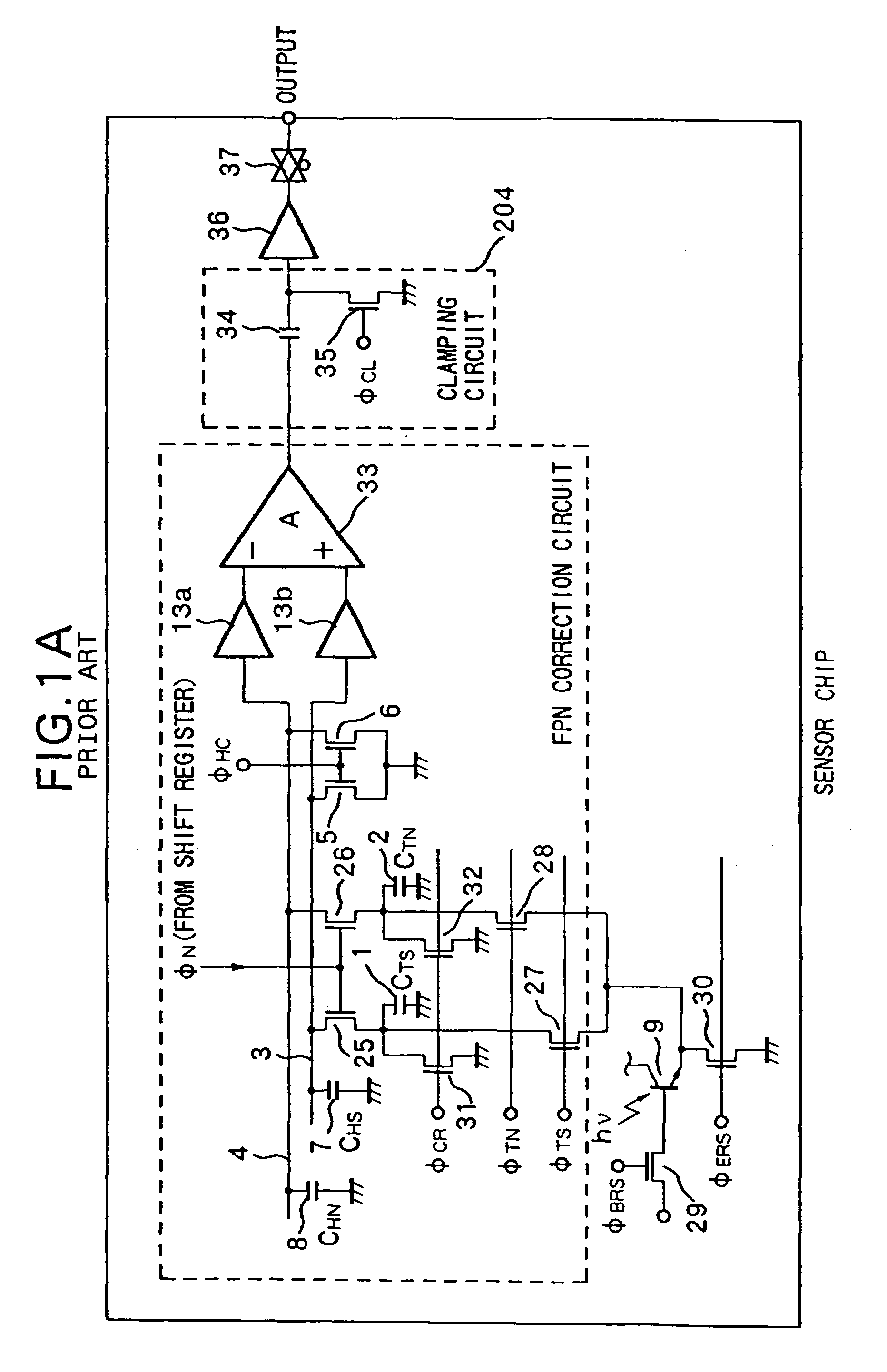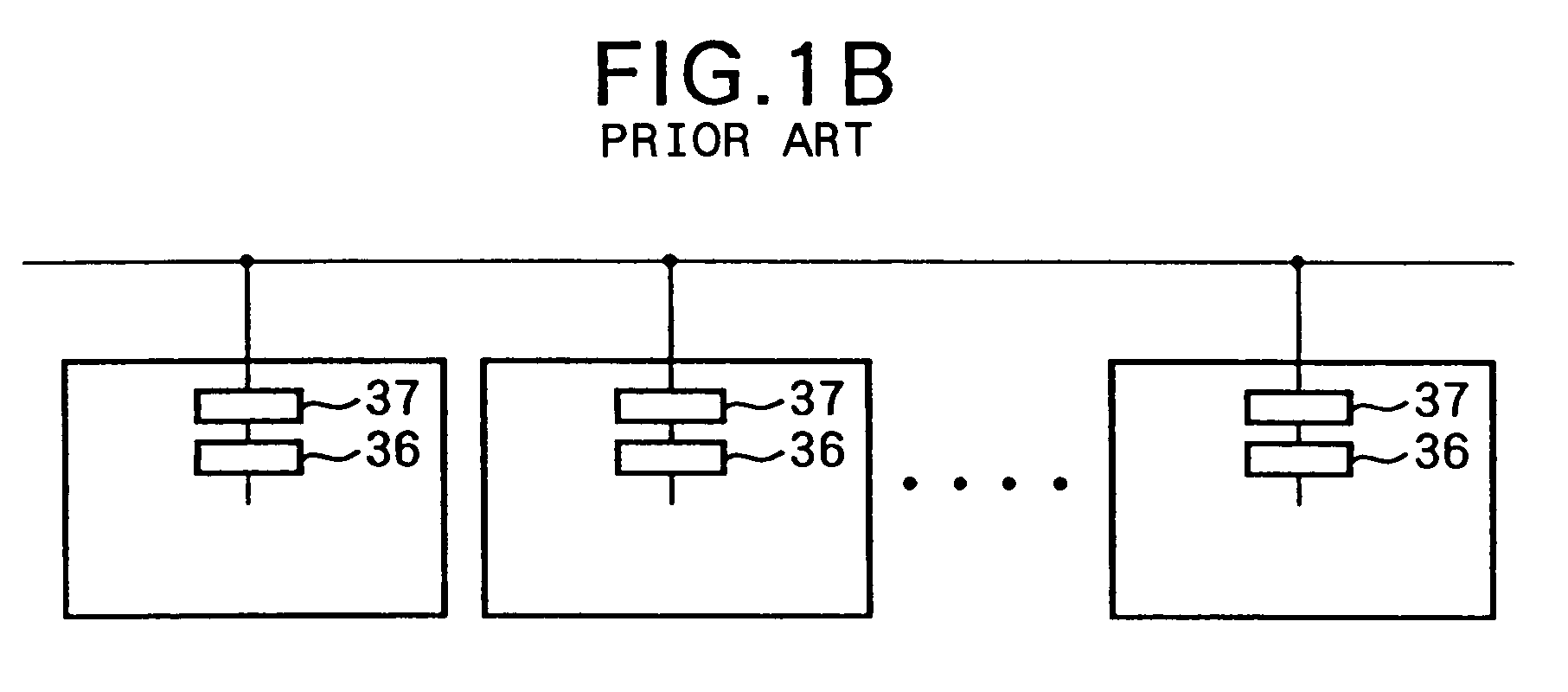Image sensor and method for driving an image sensor for reducing fixed pattern noise
a technology of image sensor and fixed pattern, which is applied in the direction of color signal processing circuit, television system, radio control device, etc., can solve the problems of increased cost required for system design and manufacture, difficult to remove inter-chip fpn arising from the offset of output buffer amplifier, and above-mentioned s-n method is not effective for inter-chip fpn, etc., to achieve the effect of removing individual differences of image sensor assemblies and adjusting gain
- Summary
- Abstract
- Description
- Claims
- Application Information
AI Technical Summary
Benefits of technology
Problems solved by technology
Method used
Image
Examples
first embodiment
Modification of First Embodiment
[0078]In the image sensor assembly 300 of the first embodiment, when the power supply for the sensor chips 100, 100′, 100″, . . . and that for the amplifier chip 200 are independently set, a broad dynamic range of the output can be maintained even when the sensor power supply voltage is decreased.
[0079]In the first embodiment, a contact image sensor using a plurality of line sensor chips has been exemplified. However, the present invention is not limited to such specific sensor, but may be effective for a two-dimensional area sensor including a large number of sensor chips. Especially, when area chips in small regions have different photo-electric conversion sensitivities, FPN variations become more conspicuous than a 1-line contact sensor and, hence, it is very effective to apply the present invention.
[0080]As another modification, when an amplification function is added to the amplifier chip 200, the amplification function may be added to, e.g., the...
second embodiment
[0082]FIG. 7 is a circuit diagram of an image sensor according to the second embodiment of the present invention. In the second embodiment, photo-electric converters in each of the sensor chips 100, 100′, 100″, . . . of the first embodiment are respectively constructed by photo-diodes 20, 20′, 20″, . . . , reset switches 21, 21′, 21″, . . . , NMOS source-follower transistors 22, 22′, 22″, . . . , transfer switches 23, 23′, 23″, . . . .
[0083]As other building elements of the second embodiment, each sensor chip has N signal holders 2, 2′, 2″, . . . , S signal holders 1, 1′, 1″, . . . , an N signal output line 4, an S signal output line 3, and reset switches 5 and 6, as in the first embodiment (FIG. 4A).
[0084]The characteristic feature of the second embodiment lies in that the level of a final output VOUT of a sensor assembly 300 can be adjusted by adding a gain amplifier 208 to an amplifier chip 200′. However, when the gain amplifier 208 is added, the output VOUT of the assembly 300 s...
third embodiment
[0099]FIG. 9 is a circuit diagram showing the third embodiment of the present invention. In this embodiment, N and S signals are read out time-serially (i.e., by time division), and the output state of N signals is clamped and is used as a reference signal.
[0100]In the third embodiment, the arrangement of each of the sensor chips 100, 100′, 100″, . . . is substantially the same as that in the second embodiment, i.e., comprises photo-diodes 20, 20′, 20″, . . . , reset switches 21, 21′, 21″, . . . , NMOS source-follower transistors 22, 22′, 22″, . . . , transfer switches 23, 23′, 23″, . . . , N signal holders 2, 2′, 2″, . . . , and S signal holders 1, 1′, 1″, . . . , except that N and S signals are time-serially (time-divisionally) read out onto a single common output line 55. That is, the single common output line 55 is sequentially reset by a reset MOS transistor 56. Since time-division driving is done, the number of source-follower amplifiers 11 including two transistors for amplif...
PUM
 Login to View More
Login to View More Abstract
Description
Claims
Application Information
 Login to View More
Login to View More - R&D
- Intellectual Property
- Life Sciences
- Materials
- Tech Scout
- Unparalleled Data Quality
- Higher Quality Content
- 60% Fewer Hallucinations
Browse by: Latest US Patents, China's latest patents, Technical Efficacy Thesaurus, Application Domain, Technology Topic, Popular Technical Reports.
© 2025 PatSnap. All rights reserved.Legal|Privacy policy|Modern Slavery Act Transparency Statement|Sitemap|About US| Contact US: help@patsnap.com



